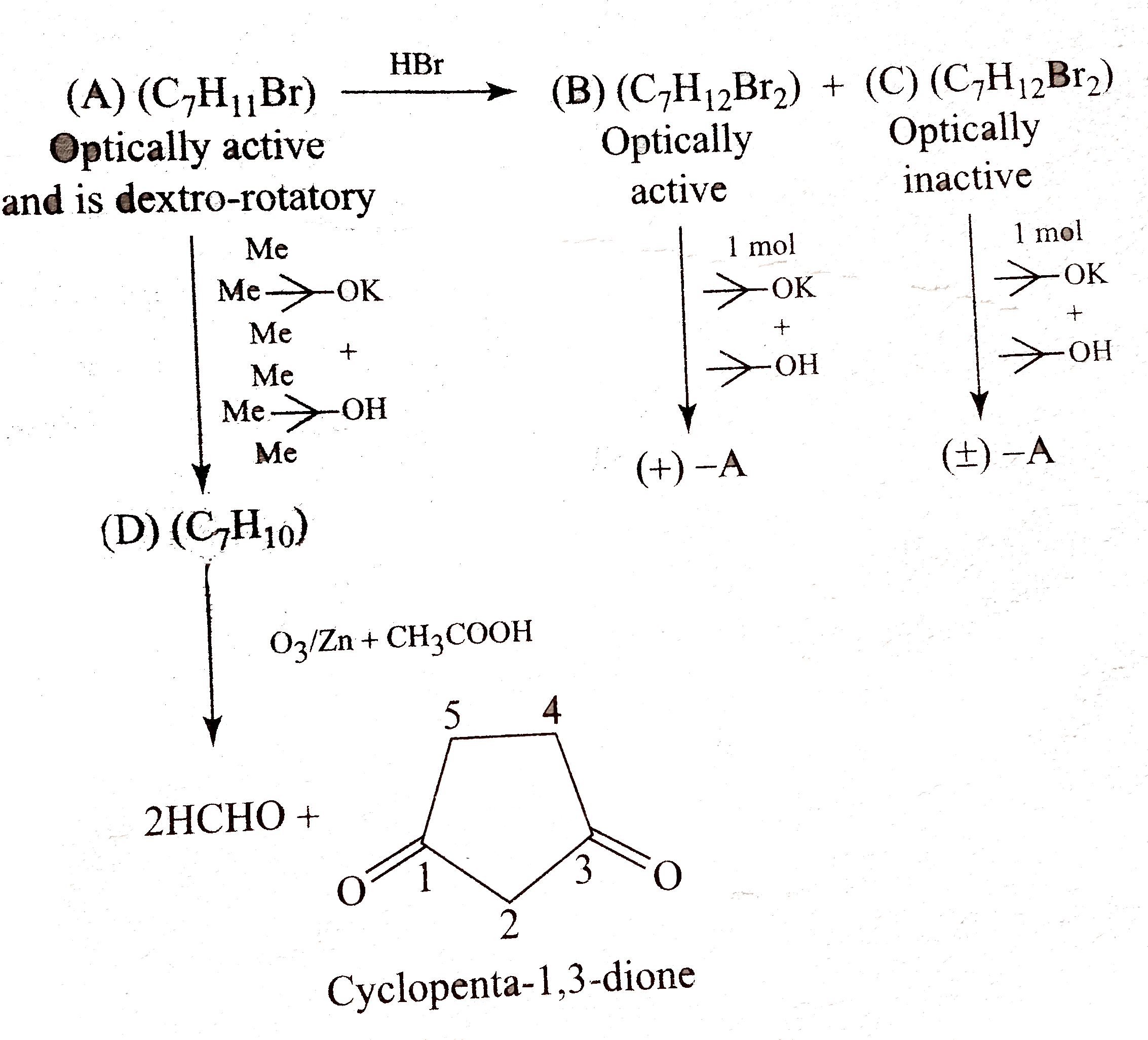An element A burns with golden flame in air. It reacts with another element B, atomic number 17 to give a product C. An aqueous solution of product C on electrolysis gives a compound D and liberates hydrogen. Identify A, B, C and D. Also write down the equations for the reactions involved.
A is sodium (Na) because it butms with golden flame in air.
B is chlorine (Cl) as its atomic number is 17. When nNa reacts with Cl2,NaCl is formed.
Hence, C is sodium chloride (NaCl).
2Na(s)(A)+Cl2(g)(B)→2NaCl(s)(C)
Aquepus sodium of NaCl, on electrolysis gives sodium hydroxide.
Thus, D sodium hydroxide (NaOH).
2NaCl(aq)(C)+2H2O(l)(B)Electrolysis−−−−−−→2NaOH(aq)Sodiumhydroxide(D)+Cl2(g)+H2(g)
Topper's Solved these Questions
Similar Questions
An element A burns with golden flame in air. It reacts with another element B, atomic number 17 to give a product C. An aqueous solution of the product C on electrolysis gives a compound D and liberates hydrogen. Identify A, B, C and D. Also write down the equations for the reactions involved.
View SolutionAn element A burns with golden flame in air. It reacts with another element B, atomic number 17 to give a product C. An aqueous solution of product C on electrolysis gives a compound D and liberates hydrogen. Identify A, B, C and D. Also write down the equations for the reactions involved.
View SolutionAn element A which is a part of common salt and kept under kerosene reacts with another element B of atomic number 17 to give a produce C. When an aqueous solution of product C is electrolysed then a compound D is formed and two gases are liberated.
(a) What are A and B?
(b) Identify C and D.
(c) What will be the action of C on litmus solution? Why?
(d) State whether element B is a solid. liquid or gas room temperature.
(e) Write formula of the compound formed when element B reacts with an element E having atomic number 5.
View SolutionA black mineral (A) on heating in presence of air gives a gas (B). The mineral (A) on reaction with dilute H2SO4 gives a gas (C) and a solution of a compound (D) on passing the gas (C) into an aqueous solution of (B), a white turbidity is obtained. The aqueous solution of (D) on reaction with potassium ferricyanide gives a blue compound (E). Identify (A) to (E) and give chemical equations for the reaction involved.
View SolutionAn organic compound A(C2H6O) reacts with sodium to form a compound B with the evolution of H2 and gives a yellow compound C when treated with iodine and NaOH. When heated with conc. H2SO4 at 413 K, it gives a compound D(C4H10O) which on treatment with cone. HI at 873 K gives E. D is also obtained when Bis heated with E. Identify A, B, C, D and E and write equations for the reactions involved.
View SolutionA compound (A) of boron reacts with Nme3 to give an adduct (B) which on hydrolysis gives a compound (C) and hydrogen gas. Compound (C) is an acid. Identify the compounds A,B and C. give the reactions inovolved.
View SolutionGive the stereochemical forculae for (A),(B)(C), and (D) and also give the reactions involved.

View SolutionA compound (A) of boron reacts with Nme3 to give an adduct (B) which on hydrolysis gives a compound (C) and hydrogen gas. Compound (C) is an acid. Identify the compounds A,B and C. give the reactions inovolved.
View SolutionA compound A on oxidation gives B(C2H4O2). A reacts with dil. NaOH and on subsequent heating forms C. C on catalytic hydrogenation gives D. Identify A,B,C,D and write down the reactions involved.
View SolutionA compound A on oxidation gives B(C2H4O2). A reacts with dil. NaOH and on subsquent heating forms C. C on catalytic hydrogenation gives D. Identify A, B, C, D and write down the reactions involved.
View Solution
